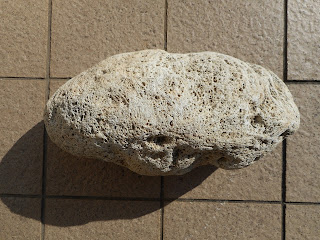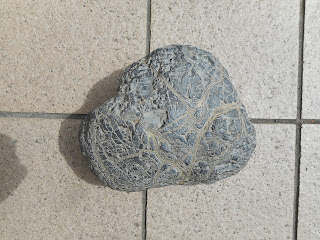The End of Cretaceous World and its Remains
Dinosaur Dung Fossils (Coprolites) by M. Yamamoto
It has been said that fossilized dungs are rare find, because they are vulnerable to water damage and easily decomposed by bacteria.
Dinosaur Dung Fossils (Coprolites) by M. Yamamoto
It has been said that fossilized dungs are rare find, because they are vulnerable to water damage and easily decomposed by bacteria.
But I found hundreds of fossilized dinosaur dungs along with bone and
soft tissue fossils in my vicinity. Herbivorous dinosaur dungs are like white
balls of fiver. Carnivorous dinosaur dungs are black or brown colored. I
inferred from appearance and shape that they are dung fossils. But analysis for
the calcium phosphate has not been done yet. Dung fossils wrapped with gut muscle
have been also found. Wood fossils with bite marks have been also found. It
seems they are bitten and swallowed without chewing. A photo is shown at the
bottom.
When I see these dung fossils, I always think
of the tropical sun shine and forest trees on which dinosaur fed. At the time
dinosaur era, tropical sunshine flourished forests and thrived herbivorous
dinosaurs. It is obvious that all the living creatures on the Earth are totally
dependent on the sun’s energy. Herbivorous dinosaurs enjoyed abundant supply of
food. And carnivorous dinosaurs had feast on them. Plant eating creatures have
been fundamental for the meat eating creatures. They prospered at the sacrifice
of plant eating creatures. But carnivorous dinosaur excrements in return
fertilized soil. And dinosaur world lasted about 165 million years until the
asteroid hit our planet. In the past lots of species went extinct. And lots
more are on the verge of extinction. We humans are the fiercest omnivores ever
walked on this planet. We should help the herbivorous animals and find the way
to coexist with them. We should utilized more sun’s energy and enrich our planet by planting trees like
acorns and cumquats which are their favorite.


























































